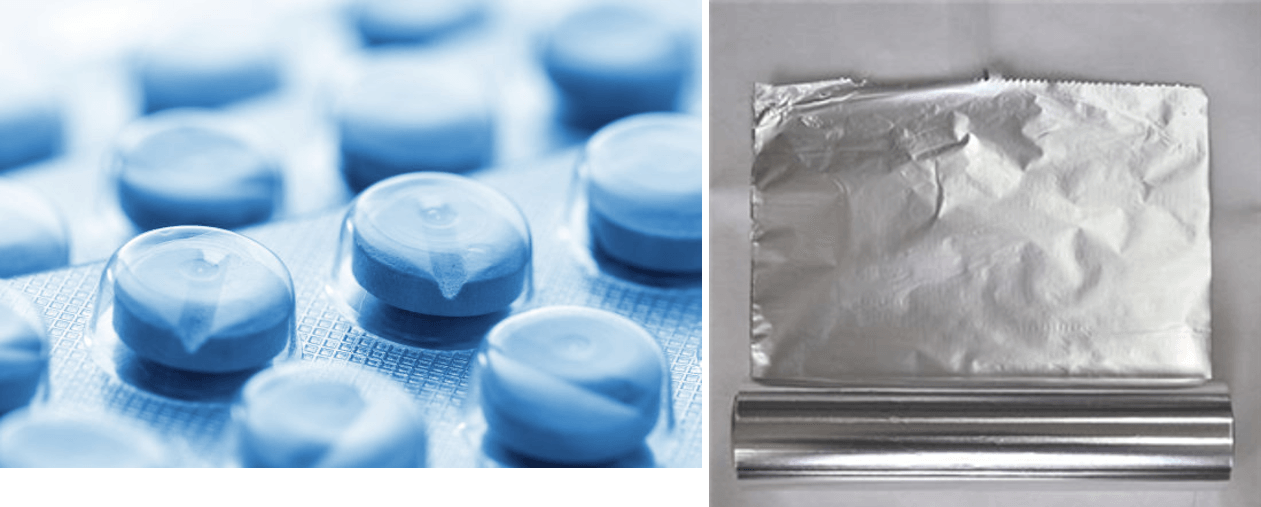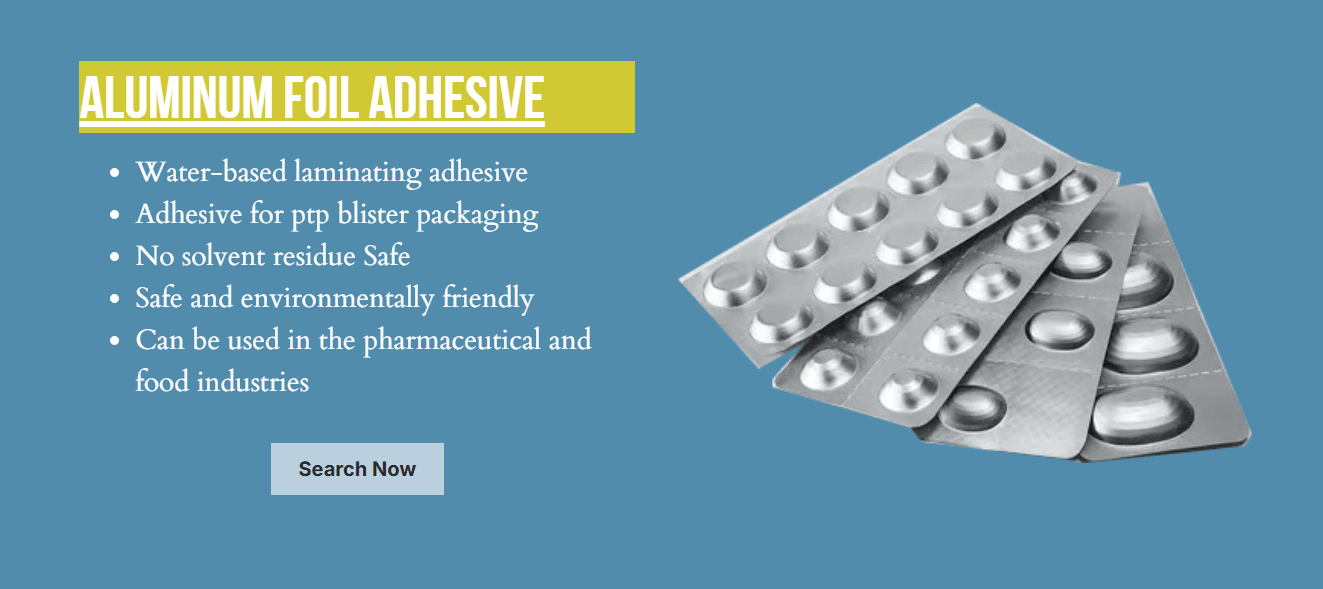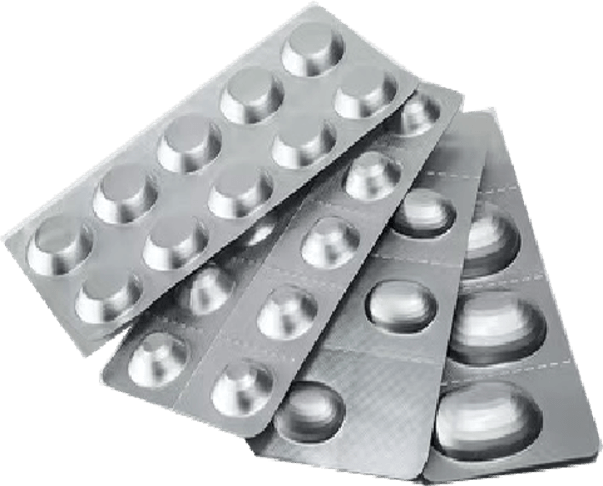Introduction

In the world of packaging, Aluminium Blister Cards have carved a niche for themselves, offering a reliable and efficient way to protect and display products. These cards are typically made from aluminum foil and are widely used in the pharmaceutical industry for packaging tablets, capsules, and other small items. Their sturdy design not only safeguards contents from external factors but also enhances product visibility, making them a favorite among manufacturers.
What Are Aluminium Blister Cards?
Aluminium Blister Cards are specialized packaging solutions that consist of a pre-formed cavity sealed with a flexible lid, commonly made from aluminum or plastic. This unique structure provides an airtight seal that preserves the integrity of the packaged items while allowing easy access for consumers. With their ability to showcase products attractively while ensuring durability, these cards have become indispensable in various sectors.
The Role of Blister Adhesives
Blister adhesives play a crucial role in the functionality of Aluminium Blister Cards by ensuring that the sealing process is effective and durable. These adhesives create a strong bond between the blister cavity and its lid, preventing any leakage or contamination that could compromise the product inside. By choosing high-quality blister adhesive solutions, manufacturers can enhance product safety and improve overall customer satisfaction.
Why Choose Super Adhesive Solutions?
When it comes to selecting adhesives for Aluminium Blister Cards, opting for super adhesive solutions can significantly impact performance and reliability. These advanced adhesives offer exceptional bonding strength while being resistant to moisture and temperature fluctuations—making them ideal for various applications in diverse industries. Investing in superior blister adhesive options not only ensures better product protection but also contributes to streamlined production processes.
Understanding Blister Adhesives

Blister adhesives play a critical role in the packaging industry, particularly for pharmaceuticals and consumer goods. These specialized adhesives are designed to create a strong bond between the blister pack and its backing, ensuring that products remain securely sealed until they reach the end user. Understanding the key properties, types, and applications of blister adhesives is essential for selecting the right solution for your packaging needs.
Key Properties of Blister Adhesives
Blister adhesives are characterized by several key properties that make them ideal for use in blister packaging. Firstly, they must exhibit excellent adhesion to both aluminium and plastic substrates to ensure a reliable seal. Additionally, these adhesives should possess good flexibility and resistance to environmental factors such as humidity and temperature fluctuations, which can impact their performance over time.
Another important property is their quick-setting capability; this allows for efficient production processes without compromising on bond strength. Furthermore, blister adhesives should be compatible with various printing inks and coatings used on packaging materials to maintain aesthetic appeal while ensuring functionality. Overall, these properties contribute to the effectiveness of blister adhesive solutions in diverse applications.
Types of Aluminium Blister Cards
Aluminium blister cards come in various types tailored to meet specific product requirements and market demands. The most common type is the standard PVC/Aluminium combination card, which offers excellent barrier properties against moisture and light while providing cost-effective packaging solutions for tablets and capsules. Another popular option is the PVDC-coated card that enhances moisture resistance even further, making it suitable for sensitive medications.
For more environmentally conscious brands, biodegradable or recyclable materials are becoming increasingly available in blister card formats. These options not only appeal to eco-friendly consumers but also help companies comply with stringent sustainability regulations. Regardless of the type chosen, each aluminium blister card serves as a protective enclosure that leverages effective blister adhesive bonding.
Common Applications in Various Industries
Blister adhesives find extensive application across multiple industries due to their versatility and reliability. In the pharmaceutical sector, they are primarily used for packaging medications like tablets or capsules where product integrity is paramount—ensuring that each dose remains uncontaminated until it's ready for consumption.
In addition to pharmaceuticals, blister adhesive solutions are utilized in consumer goods such as electronics (for securing components) and food products (for preserving freshness). The automotive industry also benefits from these versatile adhesives by using them in components where lightweight yet durable bonding is necessary—showcasing just how integral blister adhesive technology has become across different sectors.
The Science Behind Adhesive Bonding

Understanding the science behind adhesive bonding is crucial for anyone involved in the production of aluminium blister cards. At its core, adhesive bonding relies on the interaction between the adhesive and the surfaces it connects, which can include various materials such as plastic, paper, and metal. In this section, we will explore how adhesives work, what factors influence their performance, and the latest innovations in adhesive technology.
How Adhesives Work
Adhesives function through a combination of physical and chemical interactions that create a strong bond between surfaces. When a blister adhesive is applied, it forms a thin layer that penetrates into microscopic surface irregularities of both substrates, enhancing adhesion through mechanical interlocking. Additionally, chemical bonding occurs when specific molecules in the adhesive react with those on the surface of the materials being bonded—this is particularly important for creating durable seals in blister packaging.
The effectiveness of an adhesive isn't just about its composition; it's also influenced by how it's applied. Factors such as temperature, pressure during application, and even curing time can significantly impact how well a blister adhesive performs once set. Thus, understanding these dynamics is essential for manufacturers looking to optimize their processes and ensure product integrity.
Factors Affecting Adhesive Performance
Several factors come into play when assessing the performance of blister adhesives in real-world applications. One major consideration is environmental conditions—humidity and temperature fluctuations can affect both curing times and bond strength over time. Moreover, substrate compatibility plays a critical role; not all adhesives adhere equally to every material type used in aluminium blister cards.
Another vital factor is surface preparation prior to applying an adhesive. Cleanliness and surface roughness can dramatically alter adhesion levels; any contaminants or oils present can weaken bonds significantly. Therefore, proper cleaning protocols must be established to maximize performance across various applications where blister adhesives are employed.
Innovations in Adhesive Technology
The world of adhesive technology is constantly evolving with exciting innovations aimed at improving performance while reducing environmental impact. One notable trend includes the development of high-performance water-based blister adhesives that offer excellent bonding properties without compromising safety or sustainability standards. These advanced formulations minimize harmful emissions while providing strong adhesion suitable for diverse applications.
Additionally, researchers are exploring smart adhesives that respond dynamically to environmental changes or stressors—think self-healing capabilities or adjustable bond strengths based on temperature variations! Such innovations could revolutionize how we approach packaging solutions by enhancing durability while maintaining flexibility in design options for aluminium blister cards.
In conclusion, understanding how adhesives work alongside key influencing factors allows manufacturers to make informed decisions about their use in aluminium blister card production—ensuring reliability and efficiency throughout their processes.
Chemix's Water-Based Resin Solution

Water-based resins have emerged as a game-changer in the production of blister adhesives, offering a multitude of benefits that enhance both performance and application. Unlike their solvent-based counterparts, water-based resins are less toxic and more user-friendly, making them an ideal choice for manufacturers looking to improve workplace safety. Additionally, they provide excellent adhesion properties while maintaining flexibility, which is crucial for ensuring that blister packs remain intact during handling and transportation.
Benefits of Water-Based Resins
One of the standout benefits of water-based resins in blister adhesive applications is their rapid drying time. This means that production lines can operate more efficiently without long waiting periods between application and packaging processes. Moreover, these resins offer superior clarity and gloss, enhancing the visual appeal of aluminium blister cards while ensuring that the products inside are securely held.
Another key advantage is their adaptability to various substrates, allowing for effective bonding with different materials used in blister packaging. The versatility of water-based resins makes them suitable for diverse applications across multiple industries. This adaptability ensures manufacturers can achieve optimal results regardless of the specific requirements or challenges presented by their products.
Environmental Impact and Sustainability
In today's eco-conscious world, sustainability plays a vital role in manufacturing practices, especially concerning adhesives like those used in blister packaging. Water-based resins significantly reduce volatile organic compound (VOC) emissions compared to traditional solvent-based adhesives. By opting for these environmentally friendly options, companies not only comply with stringent regulations but also contribute positively to reducing air pollution.
Furthermore, water-based formulations often utilize renewable resources as part of their composition, further enhancing their sustainability profile. This shift towards greener alternatives aligns with global trends favoring eco-friendly materials across industries. As consumers become increasingly aware of environmental issues, choosing sustainable blister adhesive solutions can bolster brand reputation and customer loyalty.
Applications in Blister Adhesive Production
Water-based resins find extensive applications within the realm of blister adhesive production due to their impressive performance characteristics and environmental benefits. They are widely used in pharmaceutical packaging where security and product integrity are paramount; this ensures medications remain safe from contamination during storage or transit. Additionally, these adhesives are employed in consumer goods packaging—ranging from electronics to cosmetics—where attractive presentation combined with functional durability is essential.
Moreover, innovations continue to emerge around these adhesives as manufacturers strive for even better performance metrics such as adhesion strength or resistance to temperature fluctuations. As industries evolve and demand rises for high-performance yet sustainable solutions, water-based resin technologies will likely play an even larger role in shaping the future landscape of blister adhesive production.
Choosing the Right Adhesive

Selecting the right blister adhesive is crucial for ensuring optimal performance and durability in packaging applications. With a variety of adhesives available, understanding their unique properties can help you make an informed decision. This section will explore key factors to consider, compare different adhesive types, and highlight the specific applications suited for each.
Factors to Consider
When choosing a blister adhesive, several factors come into play that can significantly impact your packaging's effectiveness. First and foremost is adhesion strength; you want an adhesive that securely bonds the aluminum to the backing material while withstanding various environmental conditions. Additionally, consider factors such as curing time, flexibility, temperature resistance, and compatibility with the materials being used—these elements can influence both production speed and product longevity.
Another important aspect is regulatory compliance; many industries have specific guidelines regarding safety and toxicity that your chosen blister adhesive must meet. The environmental impact of the adhesive also matters—opting for eco-friendly options can improve your brand’s reputation while contributing to sustainability efforts. Lastly, cost-effectiveness should not be overlooked; balancing quality with budget constraints ensures that you achieve optimal results without breaking the bank.
Comparing Different Adhesive Types
Blister adhesives are generally categorized into several types: solvent-based, water-based, hot melt, and pressure-sensitive adhesives (PSAs). Solvent-based adhesives offer strong bonding capabilities but may pose health risks due to volatile organic compounds (VOCs). On the other hand, water-based adhesives are gaining popularity due to their lower environmental impact and easier cleanup but may require longer curing times compared to their solvent counterparts.
Hot melt adhesives provide rapid bonding and are excellent for high-speed production lines; however, they may not perform well under extreme temperatures or humidity levels. PSAs offer versatility as they adhere upon contact without needing heat or moisture but may not provide as strong a bond in some scenarios. By comparing these types based on your specific needs—such as application method or desired shelf life—you can better determine which blister adhesive will work best for your project.
Applications Suited for Various Adhesives
Different industries utilize various types of blister adhesives based on their unique requirements and product specifications. In pharmaceuticals, high-performance solvent-based or water-based adhesives are often preferred due to stringent regulations regarding safety and efficacy in packaging medications securely. Conversely, consumer goods might benefit from hot melt adhesives for quick assembly processes that boost production efficiency without compromising quality.
In electronics packaging where moisture protection is critical, specialized blister adhesives designed for durability against environmental stressors become essential. Similarly, food packaging requires adherence to strict hygiene standards; thus opting for food-safe water-based or pressure-sensitive options ensures compliance while maintaining product integrity. Ultimately, understanding these applications helps streamline your selection process when it comes to choosing the right blister adhesive tailored specifically for your industry needs.
Troubleshooting Common Adhesive Issues

When working with blister adhesives, it’s not uncommon to encounter some hiccups along the way. Identifying adhesive failures promptly can save both time and resources, ensuring that your aluminium blister cards maintain their integrity. Let’s dive into common issues and effective solutions that will keep your production running smoothly.
Identifying Adhesive Failures
One of the first signs of adhesive failure is visible delamination between the layers of the blister card. You may notice that the product is not securely bonded, leading to separation or even product leakage, which can be a costly mistake. Additionally, if you observe bubbling or wrinkling in the blister packaging, it’s often a clear indication that the blister adhesive has not cured properly or has been applied incorrectly.
Another red flag is when products don’t adhere as expected during testing phases—this could be due to poor surface preparation or inappropriate adhesive selection for specific materials. It’s crucial to keep an eye on these indicators; they can help you pinpoint exactly where things might be going awry before they escalate into bigger problems. By regularly assessing your production process and keeping tabs on these signs, you can effectively minimize downtime caused by adhesive failures.
Effective Solutions to Ensure Bonding
Once you've identified an issue with your blister adhesive, implementing effective solutions is key to getting back on track. First and foremost, ensure proper surface preparation; clean surfaces free from dust and grease allow for better adhesion and bonding strength. If issues persist, consider switching to a different type of blister adhesive that might be more compatible with your materials—sometimes a simple change can make all the difference.
Another solution involves adjusting application techniques; using consistent pressure during application ensures uniform bonding across all areas of the card. Additionally, monitoring environmental conditions such as humidity and temperature during application can also play a significant role in how well your adhesives perform—after all, nobody likes sticky situations! By making these adjustments based on observed failures, you’ll enhance both efficiency and product quality.
Best Practices for Application
To avoid encountering common adhesive issues down the line, adopting best practices for applying blister adhesives is essential. Start by meticulously following manufacturer guidelines regarding application thickness and curing times—these specifications are designed for optimal performance with their products! Consistency in application methods will lead to uniform results across batches.
Moreover, conducting regular training sessions for staff involved in production ensures everyone understands proper techniques and potential pitfalls when working with blister adhesives. Keeping equipment well-maintained also cannot be overstated; faulty machinery can lead to uneven applications that compromise adhesion strength over time. By fostering a culture of quality control throughout your operation, you'll create a more reliable end product while minimizing headaches related to adhesive failures.
Conclusion

In wrapping up our exploration of blister adhesives, it’s clear that these materials play a crucial role in the functionality and reliability of aluminium blister cards. From their diverse applications across various industries to the innovative technologies driving their development, understanding blister adhesives is essential for anyone involved in packaging solutions. As we look to the future, the evolution of adhesive technology promises even greater advancements and sustainability.
Key Takeaways on Blister Adhesives
Blister adhesives are vital for ensuring secure and effective packaging, particularly in sectors like pharmaceuticals and consumer goods. Their properties—such as adhesion strength, flexibility, and resistance to environmental factors—are key to maintaining product integrity. Remember that choosing the right blister adhesive can significantly impact both production efficiency and end-user satisfaction.
The Future of Adhesive Solutions
The landscape of adhesive solutions is rapidly evolving with a focus on sustainability and performance enhancements. Innovations such as bio-based resins and advanced formulations are paving the way for more environmentally friendly options without compromising on quality or effectiveness. As industries shift towards greener practices, we can expect blister adhesives to become more versatile while meeting stringent regulatory standards.
Final Thoughts on Aluminium Blister Cards
Aluminium blister cards represent an effective solution for protecting products while providing consumers with convenience and safety features. The synergy between aluminium materials and high-performance blister adhesives creates a robust packaging option that meets modern demands. As we embrace new technologies in adhesive development, aluminium blister cards will continue to evolve, offering even more benefits for manufacturers and consumers alike.
